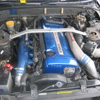Air Conditioning - Regassing
Announcements
-
Similar Content
-
Latest Posts
-
Hello Liam - HA - somewhere in flies - possibly I have an update, but I have been so busy, projects have taken a back seat to getting business back on track. I will let you know the outcome, but I think I am going to go for the 8HP, CHEERS. ELVIS
-
Thanks Joshuaho96, yes - as someone else also suggested, the 8HP seems the 'smart choice' - HA - and ZERO to do with cost, but I am sure 8 speeds will be better than 6 speeds - HA - maybe. I will purchase a new 8HP, Thanks. ELVIS.
-
Nobody said anything about getting a "...cheap Falcon box..."- it was JUST a question about a specific transmission. And YOU may have a problem with not enough $ - HA - I do NOT - so please keep your comments like you are some financial guru to yourself. BUT - much appreciated re the cost of a new 8HP and I twill probably be the way I go. Thanks. ELVIS.
-
By joshuaho96 · Posted
Most people I know in the BMW world are swapping 6HPs for 8HPs. The 6HP has a big issue with one of the clutch drum bushings wearing out shockingly early which leads to them going into limp mode going into 5th/6th gear as the oil pressure loss from the worn bushing causes clutch slip. Even with the adaptations in shifting the TCU can't bump line pressure enough to keep the clutches from slipping and burning. I've personally looked at a 335d with 6HP28 with one owner and ~90k miles on it and the transmission adaptations were way out of spec and even though it nominally drove ok I'm confident it would have needed a full rebuild sooner than later. Other than that they're fine, but the 8HP doesn't really have weird issues like this to my knowledge and they're in everything these days so pulling them out of crashed cars isn't too hard. -
By joshuaho96 · Posted
There is an ABS pump and a few solenoids. You could trigger the front/rear solenoids with a pressure bleeder attached with a Consult 2.
-




Recommended Posts
Create an account or sign in to comment
You need to be a member in order to leave a comment
Create an account
Sign up for a new account in our community. It's easy!
Register a new accountSign in
Already have an account? Sign in here.
Sign In Now